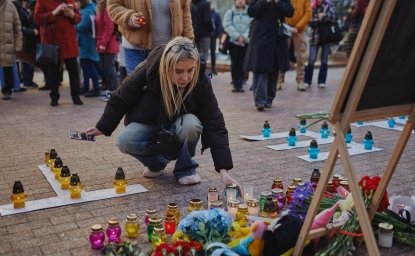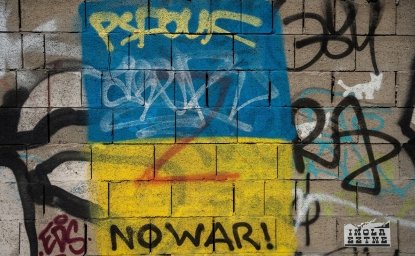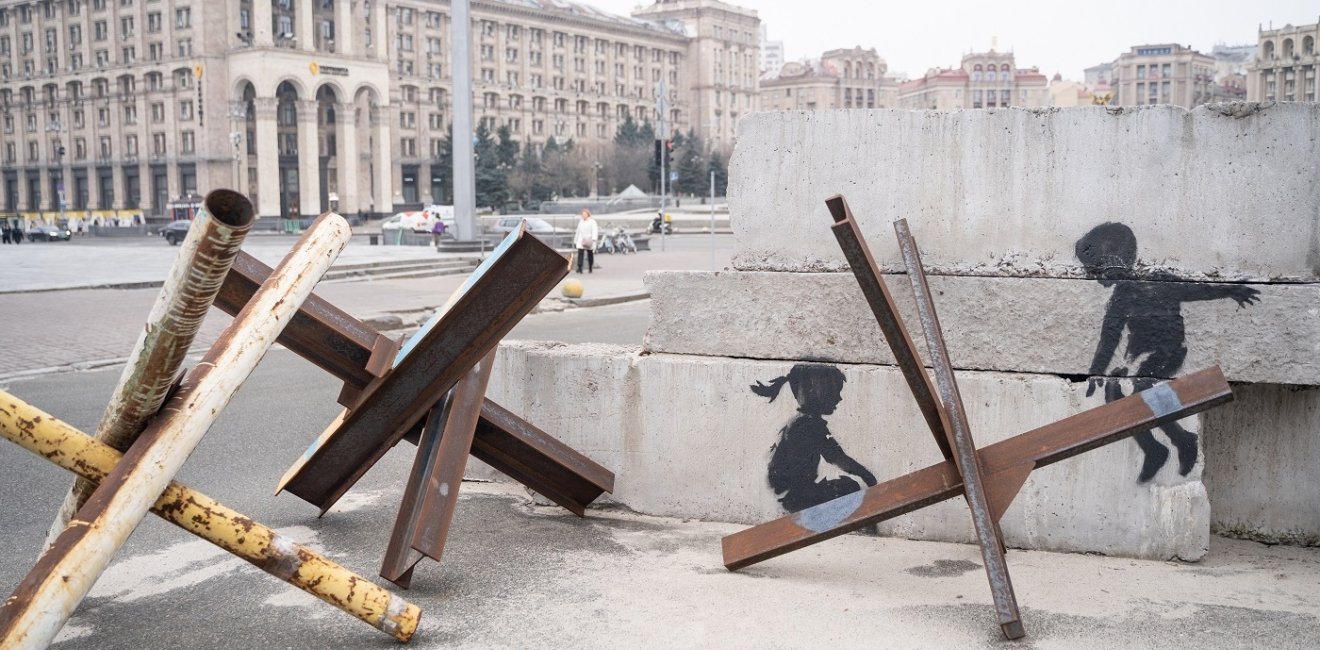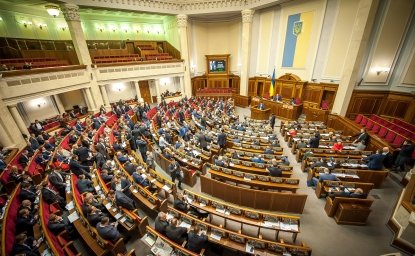
A blog of the Kennan Institute
There is no reason for joy on this, the end of the third year of Russia’s full-scale invasion of Ukraine. Far too many people have died; far too many villages, towns, and cities destroyed; far too many lives ruined; far too much trauma for a society to bear. Yet Ukraine holds, and even rises. For a nation proclaimed by its enemy not to exist, Ukrainian identity has never appeared stronger. Ukraine’s staunch defense of its nationhood stands at the center of this achievement. Its cultural vigor is not far behind.
As I wrote a year ago, the more Russian forces try to destroy Ukrainian culture, the more it asserts itself. Adaptable Ukrainian artists in every genre have kept creating, no matter what the Russians have thrown at them. The arts rise into prominence whenever danger wanes. The war has revealed an artistic sensibility that draws on tradition to create exciting new cultural forms.
Ukraine’s cultural response to this war began before the full-scale invasion of 2022. Ukrainians embraced their shared future in 2014, when Russia seized Crimea and touched off fighting in Donetsk and Luhansk. Many who spoke Russian before switched to speaking Ukrainian as a symbol of a newfound common identity. New generations of creators had reached maturity. Young Ukrainians with no memory of the Soviet Union, secure in their knowledge of the Ukrainian language no matter what they spoke at home, looked westward for inspiration. Putin and far too many other Russians mistook Ukraine’s cultural churning as a sign of cultural deficiency. We now know that it was a sign of strength, as a new cultural cement began to bond Ukrainians together.
Cultural development always is asynchronous, moving ahead at different speeds in various dimensions until suddenly something new emerges. This is the story of Ukrainian culture prior to the Russian full-scale invasion. Cinema, the visual arts, literature, popular and classical music, theater, and dance evolved separately until, under the pressure of Russian aggression, they merged into a powerful expression of shared Ukrainian identity. This weaving together of once separate cultural strands runs through the past three years.
Prior achievements—distinctly Ukrainian traditions in the visual arts, too-often-overlooked classical musical repertoire, long repressed theatrical movements—are embraced once more. So too are art forms not necessarily thought of as distinctly Ukrainian, such as modern dance, rock music, and cinema. Artists in these fields have responded to the unrelenting burdens of war by creating remarkable works which promise to withstand the forces of time.
The war has also brought Ukrainian cultural achievements to the attention of the international community. From dance and orchestral tours to theater festivals and art exhibits, many around the world have been given the chance to discover Ukrainian cultural accomplishments. As the war’s third year ends, artists and works once identified as “European” or “Russian” are being correctly reclassified as “Ukrainian.” Ukrainian dancers are performing on stages worldwide. Ukrainian plays appear in as diverse locales as London, New York, and Hong Kong. Ukrainian rock groups tour Europe and North America. Ukrainian symphonic music finds its way onto concert programs from Berlin to Buenos Aires and from South Africa to Korea. By denying the existence of Ukrainian culture, the Russian war machine has prompted many to find Ukrainian creativity for the first time.
Viewing the war through the lens of culture helps us consider possible outcomes. In military terms, this is a war of attrition: it will end when one of the combatants is no longer able to fight. Culturally, there can be no resolution to this conflict simply by drawing new lines on maps, swapping territory, or exhausting all the resources—human and material—that are available to each side. Unless we bring a cultural dimension to the peace table, any such cessation of hostilities will be a pause rather than an end.
Twenty-first century wars are about more than elites, natural resources, and strategic advantage. They are about cultural identity. Culture does not just sit on the sidelines of contemporary conflict. It is central to it.
The opinions expressed in this article are those solely of the author and do not reflect the views of the Kennan Institute.
Author

Former Wilson Center Vice President for Programs (2014-2017); Director of the Comparative Urban Studies Program/Urban Sustainability Laboratory (1992-2017); Director of the Kennan Institute for Advanced Russian Studies (1989-2012) and Director of the Program on Global Sustainability and Resilience (2012-2014)

Kennan Institute
The Kennan Institute is the premier US center for advanced research on Eurasia and the oldest and largest regional program at the Woodrow Wilson International Center for Scholars. The Kennan Institute is committed to improving American understanding of Russia, Ukraine, Central Asia, the South Caucasus, and the surrounding region through research and exchange. Read more

Explore More in Focus Ukraine
Browse Focus Ukraine
Talking to the Dead to Heal the Living

Ukrainian Issue in Polish Elections


